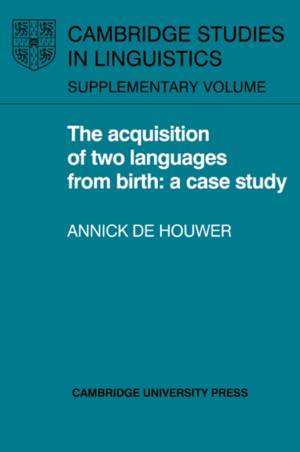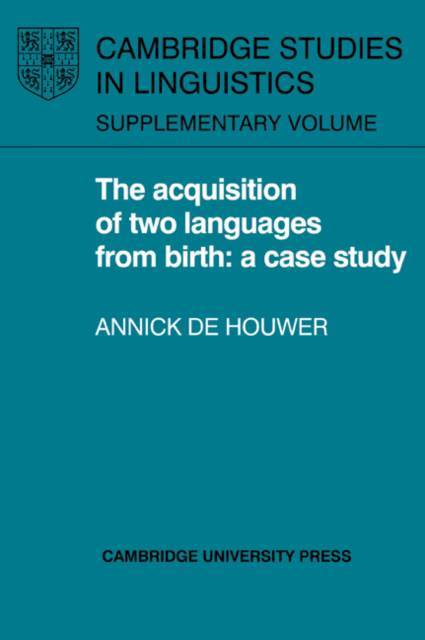
- Afhalen na 1 uur in een winkel met voorraad
- Gratis thuislevering in België vanaf € 30
- Ruim aanbod met 7 miljoen producten
- Afhalen na 1 uur in een winkel met voorraad
- Gratis thuislevering in België vanaf € 30
- Ruim aanbod met 7 miljoen producten
Zoeken
The Acquisition of Two Languages from Birth
A Case Study
Annick de Houwer, Annick De Houwer, Houwer Annick de
€ 67,95
+ 135 punten
Uitvoering
Omschrijving
This book deals with the question of how children exposed to two languages simultaneously from birth learn to speak those two languages. After a critical and comprehensive survey of most of the literature on the subject, the author concludes that empirically well-documented knowledge in this area is very scant indeed. The core of the book concerns a naturalistic study of a Dutch-English bilingual girl around the age of three. The study's main aim is to explore the nature of early bilingual morphosyntactic development. Detailed analyses of most aspects of this development show that a child who hears two separate languages spoken to her reflects this distinctness in the utterances she produces: each language is handled as a system in its own right. Furthermore, the young bilingual three-year-old greatly resembles her monolingual peers in either language. Both these findings, the author concludes, highlight the language-specific nature of the morphosyntactic development process. This book will interest linguists, psycholinguists, developmental psychologists, and child language specialists.
Specificaties
Betrokkenen
- Auteur(s):
- Uitgeverij:
Inhoud
- Aantal bladzijden:
- 408
- Taal:
- Engels
- Reeks:
Eigenschappen
- Productcode (EAN):
- 9780521024358
- Verschijningsdatum:
- 9/03/2006
- Uitvoering:
- Paperback
- Formaat:
- Trade paperback (VS)
- Afmetingen:
- 152 mm x 229 mm
- Gewicht:
- 594 g

Alleen bij Standaard Boekhandel
+ 135 punten op je klantenkaart van Standaard Boekhandel
Beoordelingen
We publiceren alleen reviews die voldoen aan de voorwaarden voor reviews. Bekijk onze voorwaarden voor reviews.











